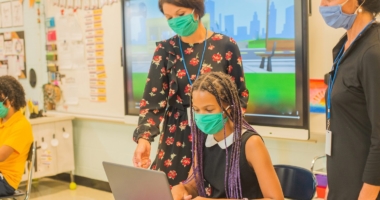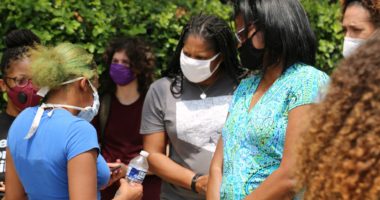Creating More Equitable Schools Amid a Pandemic. Yes, it Can Be Done!
The last big shock to the educational system before the COVID-19 pandemic was the Great Recession of 2008, which decimated K-12 budgets, cost 300,000 jobs across the U.S. public education system, and plateaued student progress in English and math that had been slowly rising since the 1990s. Twelve years later, America’s schools were ill-prepared to confront the sudden implications and disruptions when the COVID-19 pandemic hit in 2020.
Yet, there’s one key difference between the nation’s response to crisis in 2008 and now that could bolster America’s ability to protect its most vulnerable students: Instead of restricting budgets like before, billions of federal dollars have been poured into the education system. The nearly $190 billion in K-12 recovery funds represents the largest federal investment in education ever and, if used wisely, stands to alter this latest story of recovery.
Under the American Rescue Plan (ARP), schools and districts have wide flexibility and discretion in how they use their federal relief funds – 90% of the funding is meant to be spent locally, with 10% set aside for use by state education agencies. Without strict parameters around how the money is spent and tracked, a growing group of education researchers and advocates are working to surface bright examples of programs and initiatives funded by ARP dollars that hold real promise for addressing the worst consequences of the pandemic.
Encouraging examples can be found of districts and states prioritizing the collection and use of data to inform recovery, guide spending, and to ensure students needs are met as efficiently as possible. Districts like Boston and Chicago are distributing funding to schools based on indexes that factor in equity and student need, while states like Texas are requiring that students be provided individualized learning plans based on academic performance data.
Other promising areas of action relate to the new ways that school systems are improving communication, engagement, and support of students and their families. Facing sharp declines in graduation rates, districts like Forth Worth, Texas, are creating Freshman Success Teams that assist students in staying on track throughout high school while also boosting the availability of family engagement specialists to help families navigate educational challenges. Nevada is providing direct aid to families of students with disabilities to help ameliorate the sparse availability of services during school closures, while Arizona has embarked on a comprehensive and intentional plan to modernize K-12 transportation.
These practices are just the tip of the iceberg. There is still far too little understanding of how federal recovery dollars are being used across the education system. Efforts by advocates and researchers can help shine a light on what is working and where, but school, district, and state leaders need to prioritize transparency and community engagement as they move forward so that innovative practices driving outcomes for students can be amplified, celebrated, and replicated.
More than two years into the pandemic and many of the challenges facing schools seem no smaller than in March 2020. Some of them are undoubtedly larger. But our nation’s response to the crisis presents an even larger opportunity for schools to repair damage done while building a foundation for success beyond pandemic recovery. The U.S. stands on a precipice above a steep fall and yet, it’s a potentially transformational opportunity to fix our schools. With a running start and intentional leadership, they can make the jump.
Josh Parrish is the communications manager at the Collaborative for Student Success, which has partnered with the Center on Reinventing Public Education and the Edunomics Lab at Georgetown University to launch EduRecoveryHub.org, an online resource featuring bright spots in state and district K-12 recovery.










